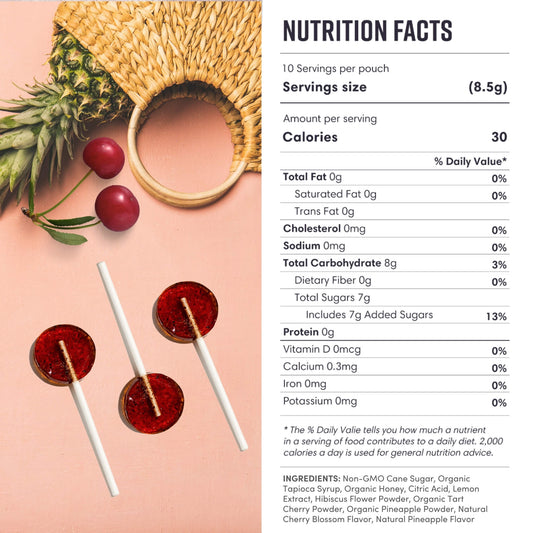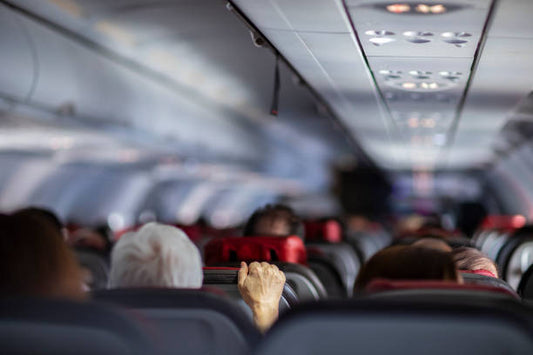Understanding Motion Sickness
Motion sickness is something many people experience, often when their brain gets mixed signals about movement from their inner ear, eyes, and other parts of the body. It can pop up during car rides, boat trips, flights, or even while enjoying virtual reality experiences. By grasping how this works, we can find the best ways to feel better!
Causes of Motion Sickness
The primary cause of motion sickness revolves around the disruption of the vestibular system, which helps maintain balance and spatial orientation. Factors that contribute to the onset of motion sickness include:
-
Inconsistent movements, such as turns or sudden stops
-
Visual mismatch between what the eyes perceive and what the inner ear senses
-
Stress and anxiety, which can heighten sensitivity
-
Individual susceptibility, as some people are naturally more prone to motion sickness than others
Certain environmental factors can make motion sickness symptoms worse. For example, being in a tight space like the back seat of a car or below deck on a boat can really heighten feelings of nausea. Strong smells, like food or fuel, can also lead to discomfort. Interestingly, studies suggest that children are more likely to experience motion sickness, but the good news is that many outgrow it as they get older. By understanding these little details, folks can be better equipped for travel and reduce the chances of dealing with motion sickness.
Symptoms and Effects of Motion Sickness
Motion sickness can present a range of symptoms that vary in intensity from person to person. Common symptoms include:
-
Nausea
-
Dizziness
-
Vomiting
-
Cold sweats
-
Increased salivation
These symptoms can really put a damper on travel and might even make some people hesitant to enjoy activities like road trips, boating, or flying. By understanding these effects, we recognize how important it is to find effective remedies. In more serious cases, motion sickness can lead to individuals avoiding travel altogether, which can affect their social interactions and opportunities for fun adventures. Plus, the psychological impact can be quite significant; the fear of feeling motion sickness can increase anxiety and stress, creating a cycle that intensifies the issue. Being aware of these wider effects is key to tackling motion sickness in an effective way.
The Importance of Non-Drowsy Remedies
For many individuals who are susceptible to motion sickness, conventional remedies often include medications that can induce drowsiness. While they may successfully alleviate symptoms, the drawbacks can overshadow their benefits.
The Drawbacks of Drowsy Medications
Using drowsy medications can lead to several issues, especially for travelers who need to remain vigilant. The drawbacks include:
-
Inability to perform tasks that require full attention, such as driving
-
Feeling lethargic or tired, which can diminish enjoyment of the travel experience
-
Potential for impaired judgment and slower reaction times
-
Risk of engagement in unsafe activities due to reduced alertness
Benefits of Staying Alert During Travel
Non-drowsy remedies allow individuals to stay alert and comfortable while traveling. The benefits of maintaining awareness include:
-
Improved focus on surroundings, which enhances safety and enjoyment
-
Enhanced experience of the trip, allowing for engagement with sights, sounds, and activities
-
Feeling more in control and capable of responding to unexpected situations
These advantages underline the importance of seeking non-drowsy alternatives for motion sickness treatment.
Beyond the immediate perks of non-drowsy remedies, it’s wonderful to think about the long-term benefits as well! When people constantly turn to drowsy medications, they might unknowingly develop a dependency on them, which can create a cycle of increasing doses just to feel the same relief. This could lead to various health concerns, like tolerance and withdrawal symptoms. By choosing non-drowsy alternatives, travelers can embrace a more sustainable way to manage their motion sickness, all while avoiding any risk of these dependencies!
In recent years, we’ve witnessed fantastic growth in the availability of non-drowsy remedies, offering a wonderful selection tailored to meet everyone’s individual needs. From delightful natural supplements like ginger and peppermint to over-the-counter medications crafted specifically to tackle motion sickness without causing drowsiness, people now have the freedom to choose solutions that perfectly fit their lifestyles. This lovely variety not only empowers travelers to make informed choices but also encourages them to explore different methods, possibly discovering what works best for their unique body chemistry and travel habits.
Types of Non-Drowsy Motion Sickness Remedies
Individuals seeking to alleviate motion sickness without the risk of drowsiness can explore a variety of remedy options. These remedies can be categorized into three main types: over-the-counter medications, prescription medications, and natural remedies.
Over-the-Counter Medications
Several over-the-counter (OTC) medications are available that do not cause significant drowsiness. Options include:
-
Meclizine: Commonly used for both motion sickness and vertigo; it offers a non-sedating alternative that is effective for many.
-
Dimenhydrinate: Although it may cause some drowsiness, lower doses tend to be more tolerable, and some individuals report satisfactory results.
-
Ginger supplements: Ginger capsules or candies can be a natural alternative, known for their nausea-reducing properties.
Along with these options, many people discover that taking medications like meclizine before travel can be quite helpful. It’s all about timing—taking the medication 1-2 hours before your journey can really boost its effectiveness! Plus, pairing these over-the-counter choices with a few simple lifestyle tweaks, like picking a seat with less motion (such as the front of a bus or the wing of an airplane), can make your travels even more comfortable.
Prescription Medications
For those who may require stronger intervention, healthcare providers can prescribe non-drowsy options, including:
-
Scopolamine patch: Placed behind the ear, this patch releases medication over time and is effective without causing significant drowsiness.
-
Ondansetron: Primarily used for post-operative nausea but can also help with motion sickness in certain cases.
Consulting with a healthcare provider is crucial for determining the most suitable prescription options. It's also important to discuss any potential interactions with other medications or underlying health conditions. Some patients may benefit from a combination of therapies, such as using a scopolamine patch alongside lifestyle changes, to achieve the best results in managing their symptoms.
Natural Remedies
Many individuals prefer natural approaches to avoid pharmaceutical side effects. Popular natural remedies for motion sickness include:
-
Aromatherapy: Essential oils such as peppermint and lavender can provide relief when inhaled during travel.
-
Acupressure: Applying pressure to specific wrist points, like the P6 point, may alleviate symptoms for some individuals.
-
Hydration: Drinking plenty of water can help manage nausea and prevent dehydration.
These remedies can really help folks manage motion sickness without the drowsiness that often comes with traditional medications. Plus, adding in some deep breathing exercises or mindfulness techniques can make these natural remedies even more effective! Snacking on light foods like crackers or pretzels can also be a great way to soothe the stomach while traveling. By bringing together these different strategies, everyone can discover a holistic approach that suits their unique needs and preferences really well.
How to Use Non-Drowsy Motion Sickness Remedies
To maximize the effectiveness of non-drowsy remedies, knowing when and how to use them is essential. Timing and dosage are critical components of a successful strategy.
When to Take Your Remedy
Timing can significantly impact the effectiveness of motion sickness remedies. Generally, it's advisable to:
-
Take medication at least 30 minutes before travel to allow for effective absorption.
-
Reapply patches or take additional doses as instructed by the package or healthcare provider.
-
Utilize remedies in alignment with the type of travel; for example, medications that are effective during car travel may not be suitable for air travel.
Along with timing your remedy just right, it's essential to think about the unique conditions of your travel environment. For example, if you're setting sail on a boat, the gentle swaying might call for a different strategy compared to the jolts of a bus ride. By understanding these little details of your travel situation, you can pick the best remedy and the perfect moment for it. Plus, if you tend to feel anxious about traveling, adding some relaxation techniques like deep breathing or visualization can really boost the effectiveness of your non-drowsy remedy and help you feel even more at ease on your journey.
Dosage Recommendations
Following dosage recommendations is vital to ensure both efficacy and safety. Factors to consider include:
-
Age and weight of the individual, as formulations may differ for children and adults.
-
Severe medical conditions or co-occurring medications may require adjustments to standard dosages.
-
Understanding the formulation instructions, including whether the medication should be taken with food or on an empty stomach.
If you're ever unsure about the right dosages for your situation, it's always a great idea to consult with a healthcare provider. Plus, keeping a travel diary can be really helpful! You can track which remedies have worked best for you in different scenarios. This little record will give you valuable insights into your unique triggers and how your body responds, helping you refine your approach as time goes on. Many people find that natural remedies, like ginger or acupressure bands, can be quite effective too! You can even use them alongside non-drowsy medications—just be sure to check in with a healthcare professional to ensure they’re compatible. By understanding your options like this, you'll feel empowered to handle motion sickness with confidence!
Precautions and Side Effects of Non-Drowsy Remedies
While many non-drowsy remedies are safe for most individuals, it is important to be aware of possible side effects and when to avoid specific treatments.
Possible Side Effects
Although marketed as non-drowsy, some individuals may still experience mild side effects. Potential side effects can include:
-
Dry mouth
-
Headaches
-
Lightheadedness
-
Minor digestive upset
Being informed about these can help users make proactive choices about their health when selecting remedies. Additionally, it’s worth noting that the severity of side effects can vary based on individual sensitivity and dosage. For example, while one person may only experience a slight headache, another might find it more debilitating. Therefore, it is crucial to start with the lowest effective dose and monitor how your body responds, adjusting as necessary.
Who Should Avoid Certain Remedies
Certain individuals may need to exercise caution or avoid specific non-drowsy remedies altogether. This includes:
-
Pregnant or breastfeeding women, unless a healthcare provider suggests otherwise.
-
Individuals with specific health conditions, such as glaucoma or prostate issues, may experience negative interactions with certain components.
-
Those taking other medications that could potentially interact with non-drowsy remedies.
It's always a good idea to chat with a healthcare professional before trying out these remedies to make sure they're safe for you. If you have allergies or sensitivities, please take a moment to check the ingredient labels thoroughly. Some non-drowsy options might include herbal extracts or synthetic compounds that could potentially cause reactions. Keeping a record of any side effects can be really helpful for your future discussions with healthcare providers so they can offer you more personalized advice on safe treatment choices.
A Natural Approach to Motion Sickness
Non-drowsy motion sickness remedies provide a great way for travelers to handle their symptoms while remaining alert and comfortable. By getting to know the causes and signs of motion sickness, and recognizing the importance of avoiding drowsy medications, individuals can feel empowered to select the remedies that are just right for them. With a variety of over-the-counter options, prescription medications, and lovely natural remedies like those from Momma Bear Organics, finding the best approach to minimize discomfort without sacrificing safety during travel is absolutely possible!










